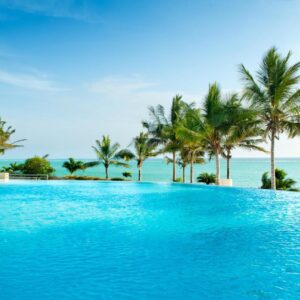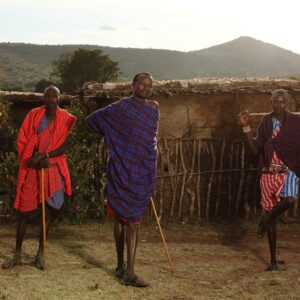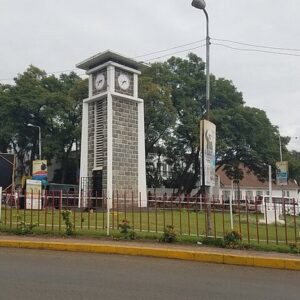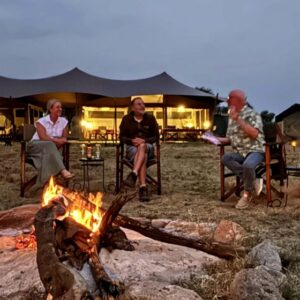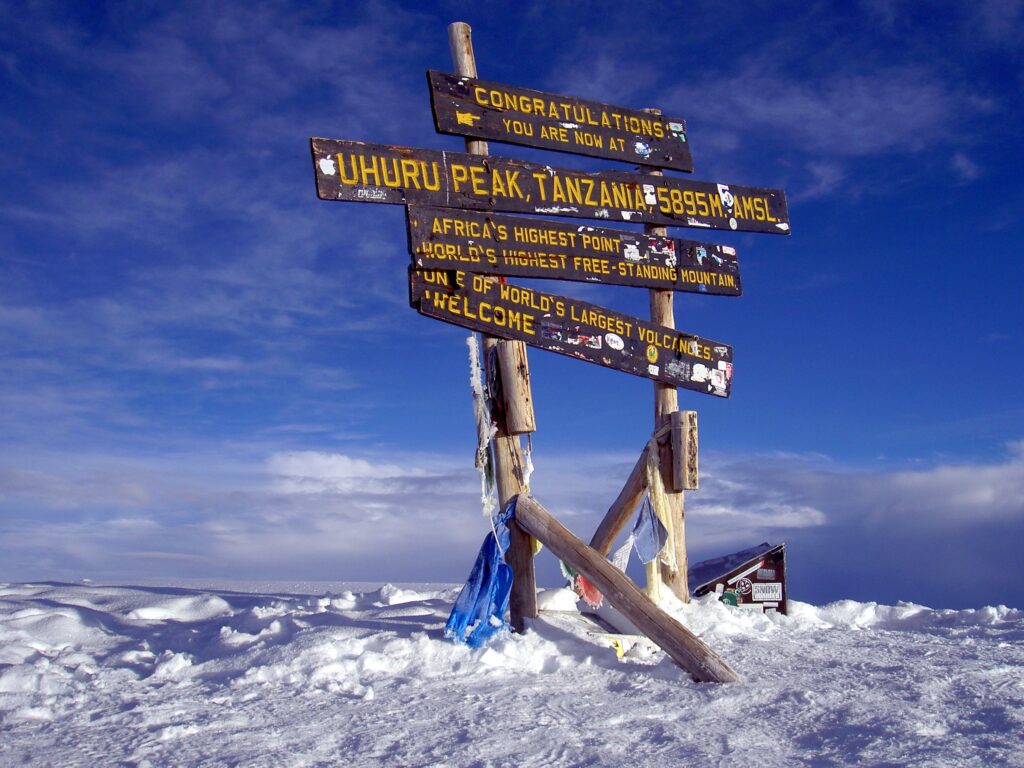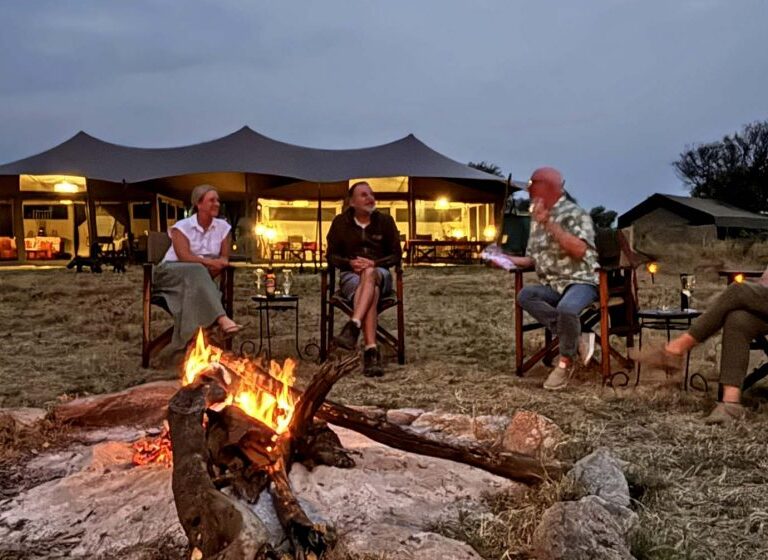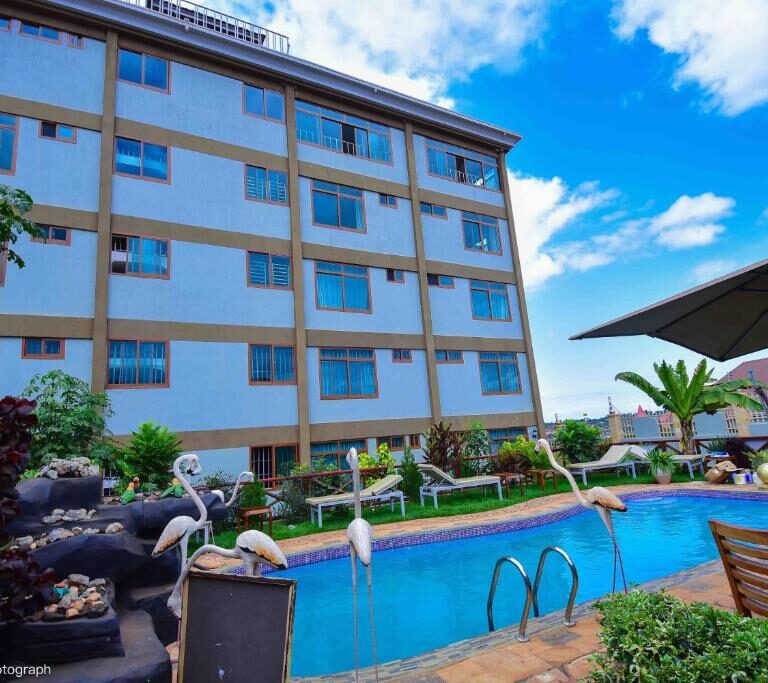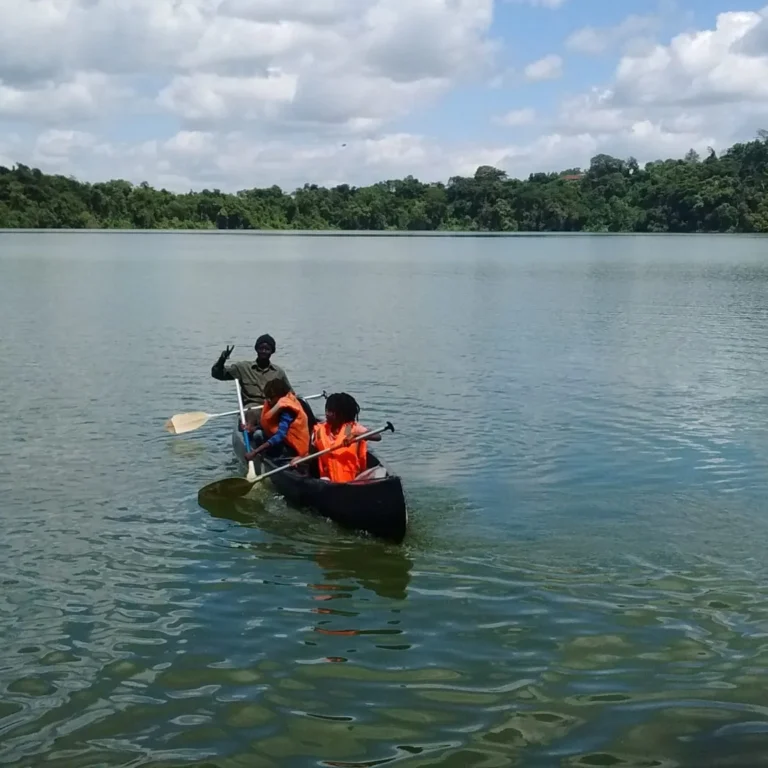On Mount Kilimanjaro, climbers stay in either mountain huts or camping tents, depending on their chosen route. The Marangu Route is the only one that uses huts, which are basic dormitory-style accommodations with bunk beds. All other routes, such as Machame, Lemosho, and Rongai, involve camping in tents provided by the tour operator and set up by porters at designated campsites. At the majestic height of 19,341 feet, Mount Kilimanjaro stands tall as Africa’s highest peak, captivating adventurers and nature enthusiasts alike. Nestled in Tanzania, this iconic mountain offers not only breathtaking vistas but also a myriad of exhilarating trekking experiences. As travelers prepare to embark on this unforgettable journey, one crucial aspect to consider is accommodation. Exploring Accommodation Options on Mount Kilimanjaro
Explore Mount Kilimanjaro’s Campsites by Route, from the lush forests of Machame to the pristine wilderness of Lemosho. Discover scenic campsites like Machame Camp and Shira Camp, offering stunning views and serene surroundings. Plan your trek and experience the adventure of a lifetime on Africa’s tallest peak. When planning your Kilimanjaro expedition, you’ll have several accommodation options to choose from, each offering a unique experience tailored to different preferences and budgets.
Kilimanjaro Mountain Huts
The most distinct and perhaps the most legendary form of accommodation on Kilimanjaro is the mountain hut. These huts are exclusively found on one route: the Marangu Route, often referred to as the “Coca-Cola” route due to its well-established infrastructure and relatively gentler ascent.
Structure and Amenities: These huts are simple, A-frame wooden structures with bunk beds, mattresses, and shared communal dining areas. They offer a sense of camaraderie, as climbers from all over the world gather to share stories and a warm meal. While they don’t provide the privacy of a private tent, they offer a solid roof over your head, protection from the elements, and a comfortable place to rest. The huts are a welcome sight after a long day of trekking, offering a sense of security and warmth that a tent cannot always provide.
Marangu Route Huts: The huts on the Marangu Route include Mandara Hut, Horombo Hut, and Kibo Hut. The journey begins at Mandara Hut, progresses to Horombo Hut for a vital acclimatization day, and finally reaches Kibo Hut, the final stop before the summit push. These huts are well-maintained by the Kilimanjaro National Park Authority, ensuring a safe and clean environment for climbers.
Mount Kilimanjaro Luxury accommodation set up
For those who desire a higher level of comfort and service, a luxury camping safari on Mount Kilimanjaro is the ultimate Mount Kilimanjaro Climbing tour package experience. This is not about huts or fixed lodges, but rather a custom-built, high-end camp that provides an exceptional level of service and comfort.
The Tented Suites: These are not your average dome tents. Luxury tents are spacious, with standing height, and are often equipped with real beds, high-quality mattresses, and plush pillows. Some luxury setups even include a private en-suite bathroom with a portable flushing toilet and hot-water showers.
Gourmet Dining: Forget basic camping meals. A luxury climb includes a personal chef who prepares gourmet meals, complete with a variety of courses and dietary options. Dining tents are often decorated with rugs, elegant chairs, and proper silverware, making each meal a refined experience.
Personalized Service: The luxury experience is defined by the level of service. You will have a dedicated team of porters, cooks, and guides who cater to your every need. From waking you up with a hot cup of coffee to providing warm washing water for your hands and face, every detail is meticulously managed to ensure your comfort.
Kilimanjaro Camps and Their Amenities: While the public camps on all routes are managed by the park authority, luxury operators often set up their camps in the same general area, but with a unique and much more comfortable setup.
Kilimanjaro Campsite
The vast majority of Kilimanjaro climbers will spend their nights in tents at designated campsites. This is the classic Kilimanjaro experience, offering an intimate connection with nature and a true sense of wilderness adventure. The camping experience varies slightly depending on the route, but the core setup remains the same: a tented camp that is set up and managed by your trekking crew. Tented camps provide a classic camping experience with the added comfort of sturdy tents, sleeping pads, and basic amenities. These camps are strategically located along popular routes such as the Machame, Lemosho, and Rongai routes, offering convenient overnight stays during your ascent
1. Lemosho Camps
Your journey commences at the Lemosho Gate, located on the western side of Kilimanjaro. Here, you’ll register with park authorities, meet your experienced guides and porters, and embark on your trek through dense montane forest teeming with wildlife. On the Lemosho route, there are various camp options depending on the duration of the hike. The most common are the 6, 7, and 8-Day itineraries, with different overnight stays during camping. The campsites on this route are Mti Mkubwa (2,820m), Shira Camp 1 (3,500m), Shira Camp 2 (3,850m), Barranco Camp (3,900m), Karanga Camp (3,960m), and Barafu Base Camp (4,670m), before reaching the summit (5,895m). The descent can lead to either the Millennium Camp (3,820m) or Mweka Camp (3,100m), with the finish gate being Mweka Gate (1,640m).
2. Shira Camps
Nestled amidst the rugged beauty of Mount Kilimanjaro’s Shira Plateau, Shira Camps offer trekkers a tranquil oasis amidst the high-altitude desert landscape. Situated along various routes to Kilimanjaro’s summit, these camps provide a welcome respite for weary adventurers, boasting breathtaking views and essential amenities to ensure a comfortable and memorable experience. The Shira route is similar to the Lemosho but starts at a higher point, resulting in inadequate or poor acclimatization. This 6-Day route includes starting to stops at Simba Camp (3,630m) and Barafu Base Camp.
3. Machame Camps
Welcome to the mesmerizing world of Machame Camps, nestled in the heart of Kilimanjaro’s breathtaking landscapes. Embarking on a journey to conquer Africa’s highest peak is a dream for many adventurers, and choosing the right accommodation along the famed Machame Route is essential for an unforgettable experience. The Machame route has campsites at Machame (2,820m), Shira Camp 2 (3,850m), Barranco Camp (3,900m), Karanga Camp (3,960m), Barafu Base Camp (4,670m), and Millennium Camp (3,820m) or Mweka Camp (3,100m) for the descent. The finish gate is Mweka Gate (1,640m).
4. Umbwe Camps
The Umbwe route is the shortest and most direct path up the mountain, with starting to overnight stay at Umbwe Cave Camp (2,850m), Barranco Camp (3,900m), Karanga Camp (3,960m), Barafu Base Camp (4,670m), and the Millennium Camp (3,820m) or Mweka Camp (3,100m) for the descent. The finish gate is Mweka Gate (1,640m).
5. Marangu Camps – Hut
Embark on an unforgettable journey to conquer Mount Kilimanjaro via the iconic Marangu Route, also known as the “Coca-Cola Route,” renowned for its scenic beauty and comfortable accommodations. Your adventure begins at the Marangu Gate, the gateway to Kilimanjaro’s lush rainforest. Here, you’ll register with park authorities, meet your experienced guides, and commence your trek amidst the vibrant flora and fauna of the lower slopes.
The Marangu Route is the only one that uses hut accommodation instead of tents. It’s took 5 or 6-Day route include overnight stay at Mandara Hut (2,700m), Horombo Hut (3,720m), Kibo Hut (4,700m) for the summit, and then back to Horombo Hut before descending to Mweka Gate (1,640m).
6. Rongai Camps
The Rongai Route on Mount Kilimanjaro also features a series of campsites where climbers rest during their ascent. These camps provide accommodation and necessary facilities for trekkers as they make their way to the summit. Here are the main camps along the Rongai Route:
The Rongai route starts from the North of the mountain and starting to overnight stay at Simba Camp (2,625m), Second Cave Camp (3,480m), Kikilewa Camp (3,630m), Mawenzi Tarn Camp (4,310m), Kibo Camp (4,700m), and finally, Horombo Hut (3,720m) for the descent. The finish gate is Mweka Gate (1,640m).
These camps along the Rongai Route offer essential facilities and rest points for climbers as they journey towards the summit, providing shelter, food, and opportunities to acclimatize to the high altitude.
7. Northern Circuit Camps
The Northern Circuit is an extension of the Lemosho route, taking a longer and quieter route around the mountain. The route start to overnight stay at Mti Mkubwa Camp (2,850m), Shira Camp 1 (3,500m), Shira Camp 2 (3,850m), Moir Hut (4,150m), Buffalo Camp (4,020m), Third Cave Camp (3,870m), and School Hut (4,750m) for the summit, before descending to either the Millennium Camp (3,820m) or Mweka Camp (3,100m). The finish gate is Mweka Gate (1,640m).
8. Mweka Camps
Mweka Camps are a series of campsites located on the slopes of Mount Kilimanjaro in Tanzania. These camps are an integral part of the popular routes used by climbers attempting to summit Africa’s tallest peak. The Mweka Route, in particular, utilizes several of these camps as resting points during the descent from the summit. The Mweka route is only used for descent, with stops at the Millennium Camp (3,820m) and Mweka Camp (3,100m).
Factors to consider when choosing the Right Mount Kilimanjaro Accommodation
When choosing Mount Kilimanjaro accommodation before or after a climb, consider the location relative to the trailhead and towns like Moshi or Arusha, the amenities offered (like gear storage, hot water, or post-climb recovery), the price and budget, and guest reviews to gauge comfort and service. For on-mountain stays, consider the specific route’s offerings, as some routes provide basic hut accommodation while others require camping.
Altitude Considerations:
When selecting accommodation on Mount Kilimanjaro, it’s essential to consider the altitude of each campsite. As altitude increases, oxygen levels decrease, posing potential challenges for trekkers. Therefore, opting for a route with gradual altitude gain and well-spaced campsites is crucial for acclimatization.
Route Selection
Each route on Mount Kilimanjaro offers a unique trekking experience, with varying landscapes and difficulty levels. Whether you prefer the scenic vistas of the Machame Route or the historical significance of the Marangu Route, choosing the right route that aligns with your preferences and fitness level is paramount.
Camping Facilities
From basic tents to permanent huts, camping facilities on Mount Kilimanjaro vary depending on the route chosen. Trekkers must assess their comfort preferences and camping experience before selecting an accommodation option. Additionally, amenities such as toilets, dining areas, and water sources should be considered when evaluating campsite facilities.
Environmental Impact
As stewards of the environment, trekkers must prioritize sustainable practices when selecting accommodation on Mount Kilimanjaro. Choosing eco-friendly campsites and adhering to Leave No Trace principles help minimize the ecological footprint of trekking expeditions, ensuring the preservation of this natural wonder for future generations.
Scaling the heights of Mount Kilimanjaro is a dream for many, a journey that tests both physical endurance and mental fortitude. But as you plan this epic adventure, one of the most crucial decisions you’ll make is where you’ll lay your head each night. The “Roof of Africa” offers a surprisingly varied range of accommodations, each providing a unique experience that shapes your trek. From the basic camaraderie of mountain huts to the exclusive comfort of luxury setups and the rustic charm of campsites, understanding your options is key to a successful and enjoyable climb.
Dining Tents on Kilimanjaro
A proper dining tent is a game-changer on the mountain. It provides a warm, dry space to eat, socialize, and rest. Inside, you’ll find a table and chairs, offering a welcome break from the cold ground. This tent serves as the social hub of the camp, where you’ll enjoy hearty meals prepared by your cook and receive daily briefings from your head guide.
Private Toilet Tents on Kilimanjaro
While some public long-drop toilets are available at certain camps, a private toilet tent is a highly recommended Hygiene option on Kilimanjaro and often a standard feature on most climbs. This small, dome-shaped tent with a portable toilet is a significant upgrade in terms of hygiene and privacy. It’s a welcome luxury, on Mt Kilimanjaro Climbing Routes, especially during cold nights or in the middle of the night.
Tips: Kilimanjaro private toilet tents provide a portable, enclosed space with a chemical toilet that includes a seat and flush mechanism, offering greater comfort, hygiene, and privacy than the standard public long-drop toilets. A porter carries and sets up the tent and toilet at each camp, and it is emptied and cleaned regularly. While not essential, they are a good investment for those seeking an improved experience on the mountain, especially during cold, dark nights or in busy campsites.
Standard Camping
This is the most common type of camping on Kilimanjaro. Your tour operator provides all the necessary equipment, including a sleeping tent, a dining tent, and a toilet tent. The tents are typically dome-style, accommodating two climbers comfortably, Kilimanjaro Climbing Guides. Mattresses are provided, but you’ll need to bring your sleeping bag.
Conclusion: Choosing Your Climb
The choice of accommodation on Kilimanjaro is a direct reflection of the type of climb you wish to have. The Marangu Route offers the unique and communal experience of mountain huts. The vast majority of other routes offer a classic camping experience, where the thrill of the trek is heightened by the simplicity and camaraderie of a tented camp.
For those who seek the ultimate in comfort and a truly unforgettable experience, the luxury accommodation setups provide an unparalleled journey. No matter which option you choose, the magic of Mount Kilimanjaro lies not in the comfort of your bed, but in the majestic landscape, the challenging ascent, and the incredible feeling of standing on the highest point in Africa. Each accommodation type serves a different purpose, but all lead to the same unforgettable summit experience.

